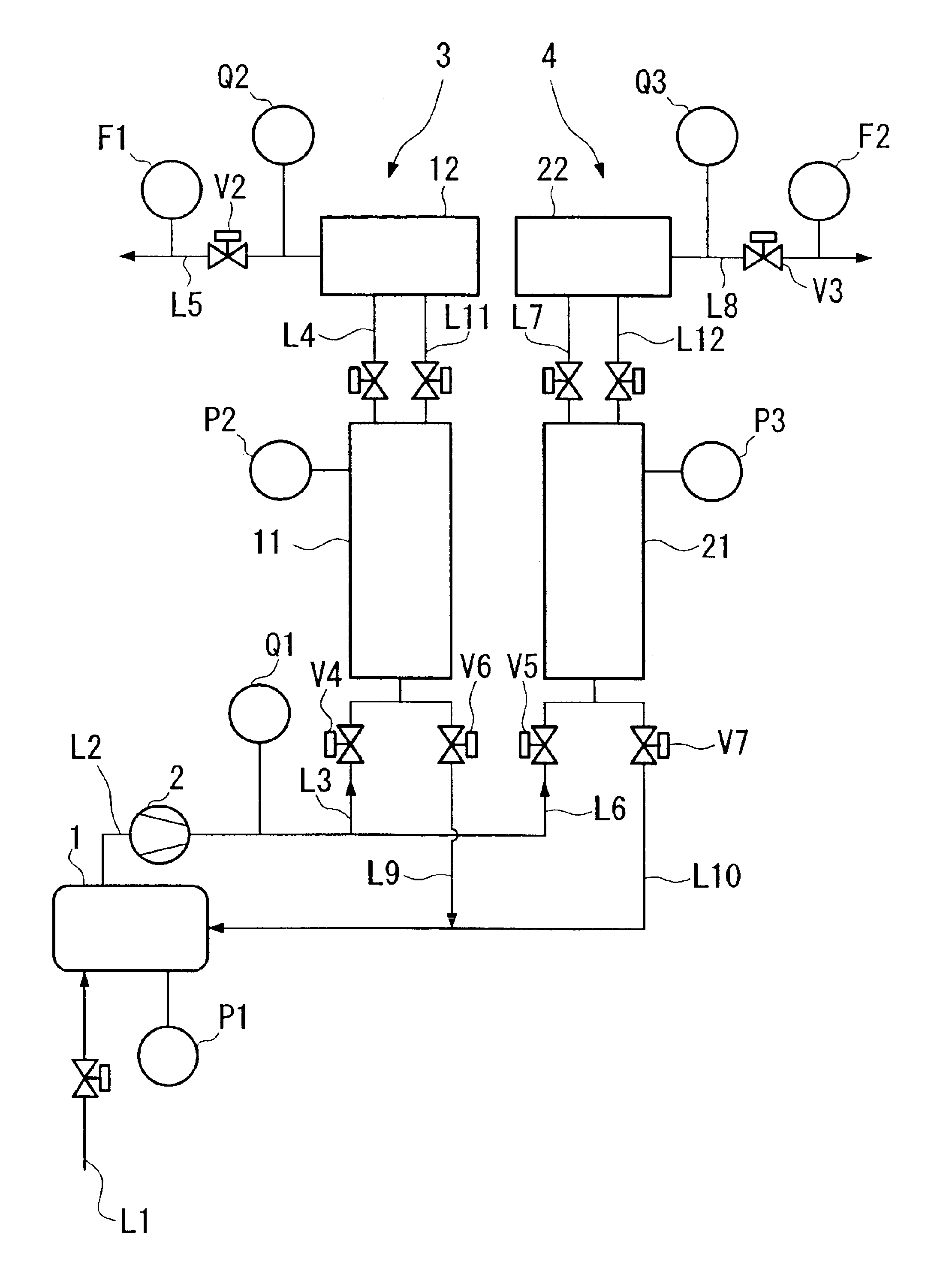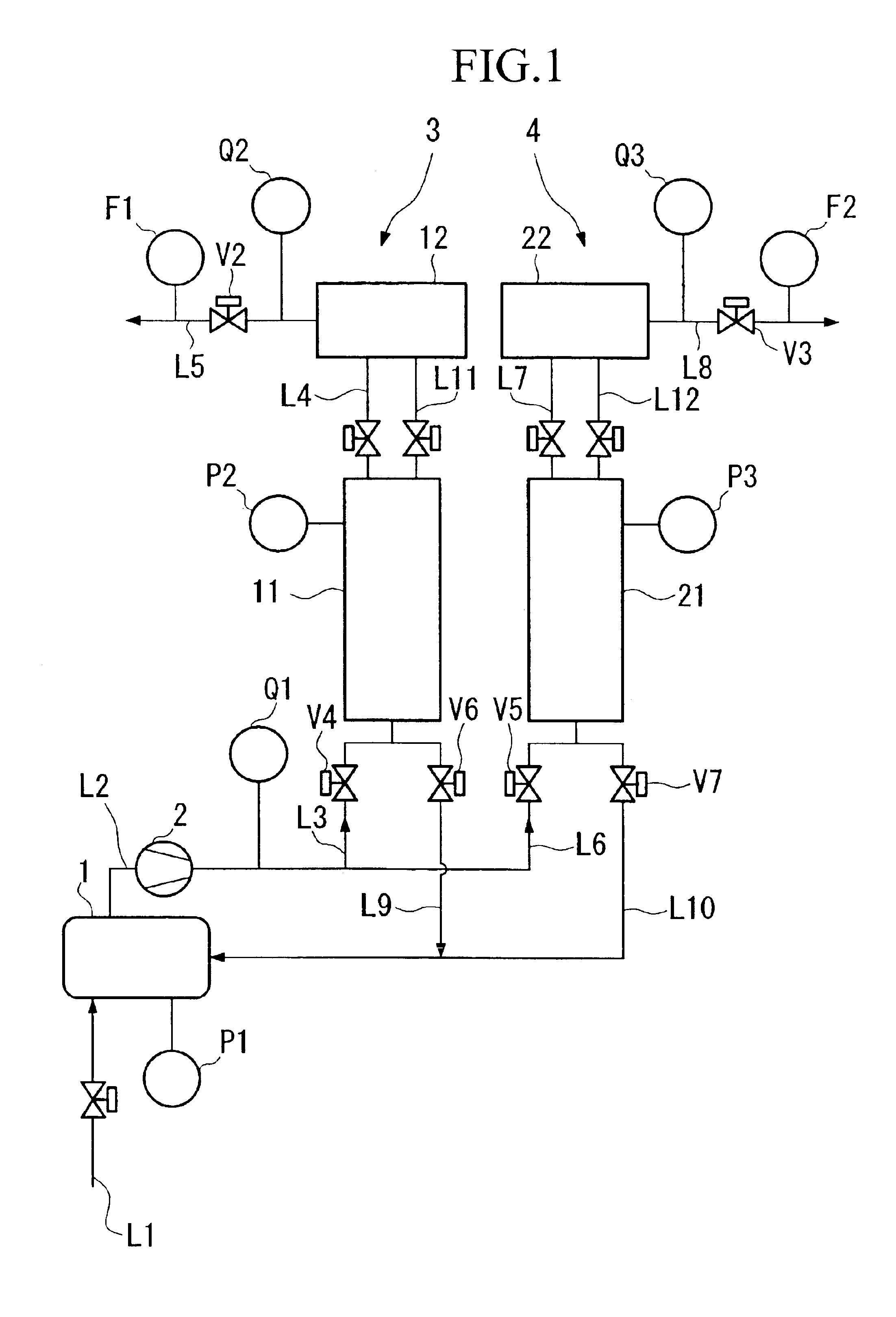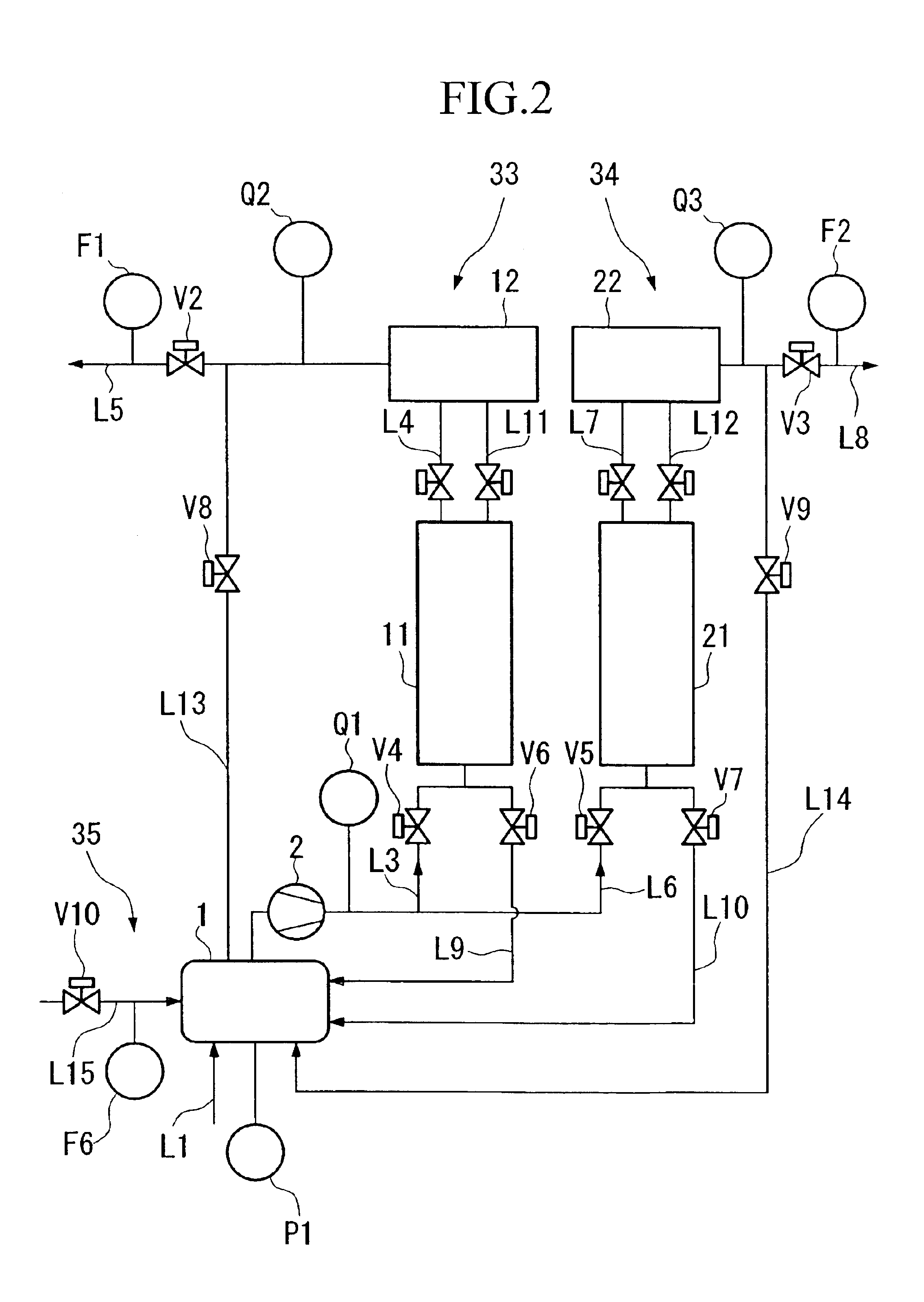Gas separation method and device
a gas separation and gas technology, applied in the direction of separation process, dispersed particle separation, chemistry apparatus and processes, etc., can solve the problems of difficult enrichment of psa, difficult to achieve separation, and high cost of krypton and xenon
- Summary
- Abstract
- Description
- Claims
- Application Information
AI Technical Summary
Benefits of technology
Problems solved by technology
Method used
Image
Examples
example 1
[0088]Separation of krypton and nitrogen was carried out using the gas separation apparatus shown in FIG. 1.
[0089]The first adsorption column 11 had an inner diameter of 108 mm, a height of 650 mm, and was filled with 2.5 kg of activated carbon.
[0090]The second adsorption column 21 had an inner diameter of 154 mm, a height of 650 mm, and was filled with 8.8 kg of an Na-A type zeolite.
[0091]A compressor 2 having a capacity of 26 L / min was used (here and below, the flow rate unit (L / min) is at 0° C. at 1 atmosphere). The operational half-cycle of PSA is 250 s.
[0092]At the start, a mixed gas consisting of 50% krypton and 50% nitrogen was introduced as the feed gas into the apparatus at 2.0 L / min via path L1, and nitrogen product was extracted at 1.005 L / min from path L5 and krypton product was extracted at 0.995 L / min from the path L8.
[0093]First, in order to investigate dependence of the nitrogen product and krypton product on the circulating feed gas concentrations, an experiment was...
example 2
[0099]An experiment to confirm the long-term stability of the apparatus was carried out by using the gas separation apparatus having the structure shown in FIG. 2. The component mechanisms such as the first adsorption column 11 and the second adsorption column 21 and the operating conditions such as the half-cycle time are identical to those of Example 1. In addition, similarly Example 1, a densitometer (concentration detecting part) Q1 that continuously monitors the circulating feed gas concentrations is provided downstream of the compressor 2, a mass flow controller (control valve V2) that adjusts the outflow rate of the nitrogen product is provided on the path L5, and a mechanism that adjusts the outflow rate of the nitrogen product using a PID controller based on the detected value of the densitometer Q1 was provided.
[0100]A krypton tank was installed on the gas supply part 35, and a mass flow controller V10 was installed on the path L15. A pressure detector P1 was installed on ...
example 3
[0105]In the semiconductor manufacturing apparatus that is the object of the present gas separation apparatus, in a plasma process in a krypton atmosphere, a mixed gas consisting of krypton and nitrogen is discharged, and only nitrogen is discharged during the introduction and removal of the substrate. Thus, an experiment that simulates this state was carried out. In the experiment, a gas separation apparatus having a structure identical to that in Example 2 was used.
[0106]In the experiment, first a mixed gas consisting of 50% krypton and 50% nitrogen was supplied for 20 minutes at 2 L / min as feed gas, and then an operation in which nitrogen gas was supplied for 10 minutes at 1 L / min was repeatedly carried out.
[0107]In the 20 minutes during which the mixed gas consisting of 50% krypton and 50% nitrogen was supplied at 2 L / min as feed gas, the nitrogen product was introduced from path L5 at 1.005 L / min and the krypton product was introduced from path L8 at 1 L / min. In addition, in th...
PUM
| Property | Measurement | Unit |
|---|---|---|
| pore diameter | aaaaa | aaaaa |
| height | aaaaa | aaaaa |
| inner diameter | aaaaa | aaaaa |
Abstract
Description
Claims
Application Information
 Login to View More
Login to View More - R&D
- Intellectual Property
- Life Sciences
- Materials
- Tech Scout
- Unparalleled Data Quality
- Higher Quality Content
- 60% Fewer Hallucinations
Browse by: Latest US Patents, China's latest patents, Technical Efficacy Thesaurus, Application Domain, Technology Topic, Popular Technical Reports.
© 2025 PatSnap. All rights reserved.Legal|Privacy policy|Modern Slavery Act Transparency Statement|Sitemap|About US| Contact US: help@patsnap.com



